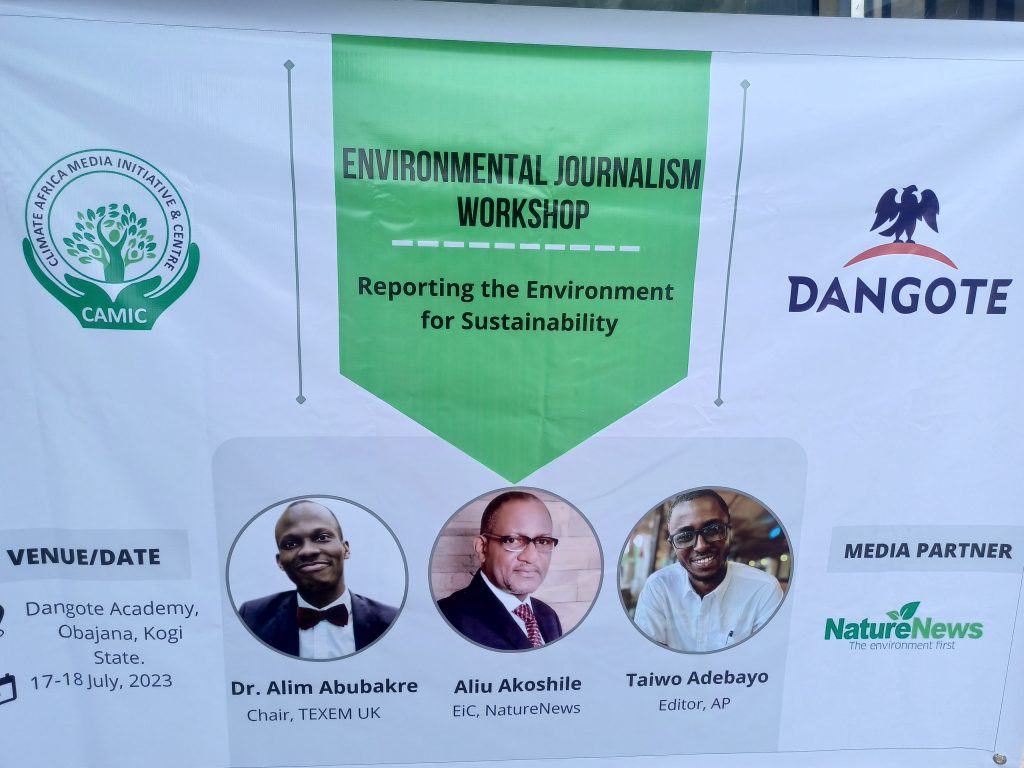By Dare Akogun
As part of it’s efforts at reducing it’s CO2 emission geared towards environmental sustainability, the Dangote Cement Company, Obajana says it has introduced cutting edge technology in trapping dust in the production of cement.
The General Manager, Human Resource, Dangote Cement Company Adinoyi Haruna, made the disclosure in his opening remark at A 2 Day Environmental Journalism Workshop with the Theme; Reporting The Environment For Sustainability, holding at the Dangote Academy, Obajana, Kogi State
.

He said the company as part of it’s contribution at reducing emission from it’s plant geared towards protecting the environment of the community it’s operating invested heavily in electrostatic precipitators, ESP’s, in handling particulate emissions from cement production.
Haruna added that the Company also uses bag filters to collect cement dust, and uses 85% of limestone in cement production.
He explained that limestone initiative is geared towards reducing fuel consumption and reduction of carbon dioxide into the environment in the production of Dangote cement.
Mr Haruna further explained that as a conscious effort to protect the environment, the Cement Company has introduced the use of alternative fuel by using agriculture waste, palm kernel shells, shredded tyres as fuel, aimed at reducing carbon dioxide in the environment.
He therefore called or media practitioners to commit themselves to the sustainability of the environment in their reporting as part of a conscious efforts to mitigate against climate change.
What is an Electrostatic Precipitator
An ESP is an air pollution control device that removes fine particulate matter from a gas stream by using the force of an induced electrostatic charge.
It is widely employed in various industries, including cement manufacturing, to control and reduce emissions of particulate matter, such as dust and fly ash.
By utilizing an electrostatic precipitator in cement production, particulate emissions can be significantly reduced, enhancing air quality and minimizing the environmental impact of the cement manufacturing process.
ESPs can effectively capture and remove a high percentage of fine particulate matter, even particles as small as a few micrometers in diameter.
However, it’s important to note that ESPs are primarily designed to handle particulate matter and may not be as efficient in removing gaseous pollutants.
It’s worth mentioning that there are also other technologies available for handling particulate emissions from cement production, such as fabric filters (baghouses) and wet scrubbers, each with its own advantages and limitations.
The selection of the most suitable technology depends on various factors, including the specific characteristics of the particulate emissions, process conditions, and regulatory requirements.

